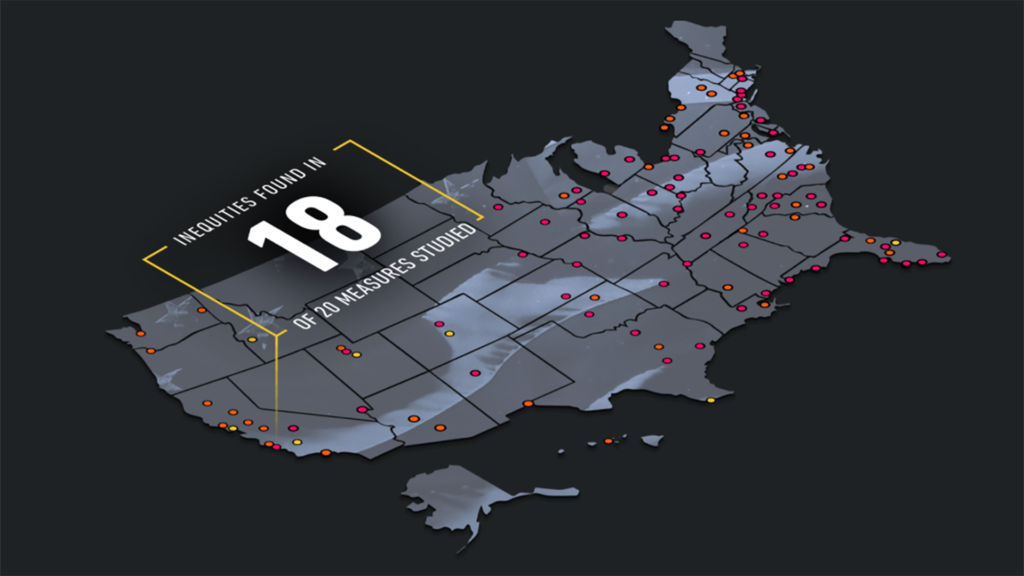
“The data was heartbreaking, really astounding,” says Akilah Davis, a reporter at ABC-owned WTVD in Raleigh-Durham, North Carolina. “In Durham and Chapel Hill metro area schools, Black students are six times more likely than white students to be suspended. I just saw it immediately as a school-to-prison pipeline story. So I quickly got to work looking for faces for the story.”
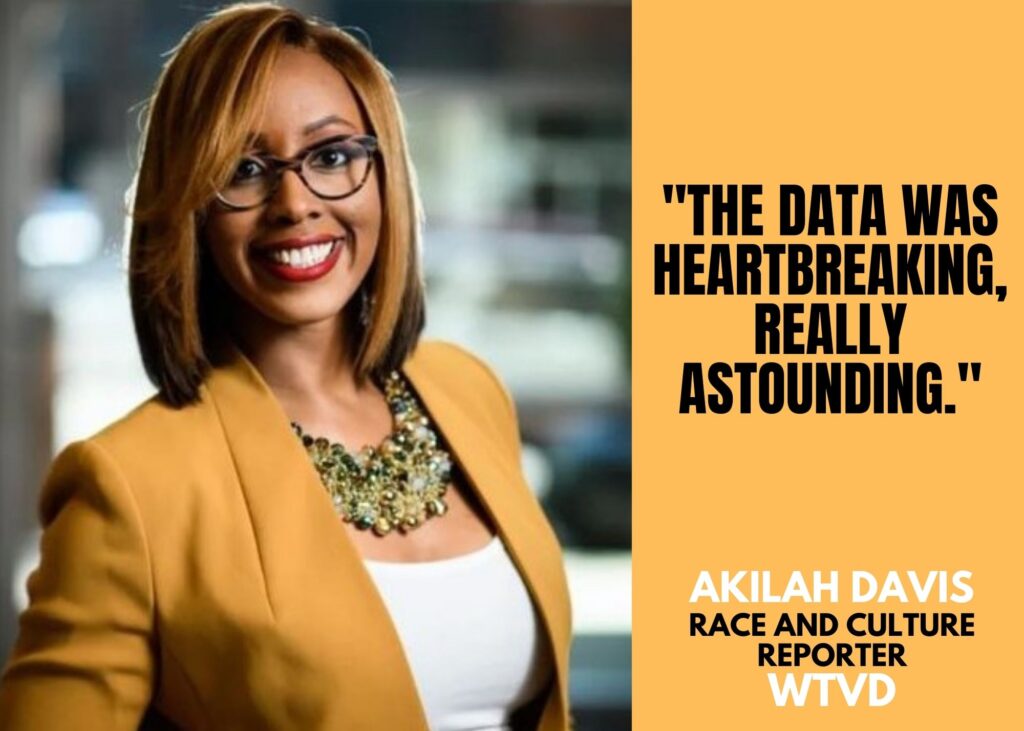
Davis, a member of the ABC station group’s race and culture team (which we wrote about last April), drew her inspiration from an ambitious new project ABC calls Our America: Equity Report — a data-based analysis of racial inequities in the nation’s top 100 metropolitan areas that went public this week. It’s a striking example of group-wide innovation and the power of data to fuel original local reporting.
Our America: Equity Report fuses 10 million data points into a scorecard of sorts: an interactive overview of race-based disparities across 20 criteria in five critical areas: housing, health, education, policing, and the environment. Users can click on any of the 100 metro areas in the report and see how it scores across all the measures. For example, in Phoenix, the report charts inequities in all three aspects of policing that the report examines: unequal arrests, unequal drug enforcement, and diversity of police forces.
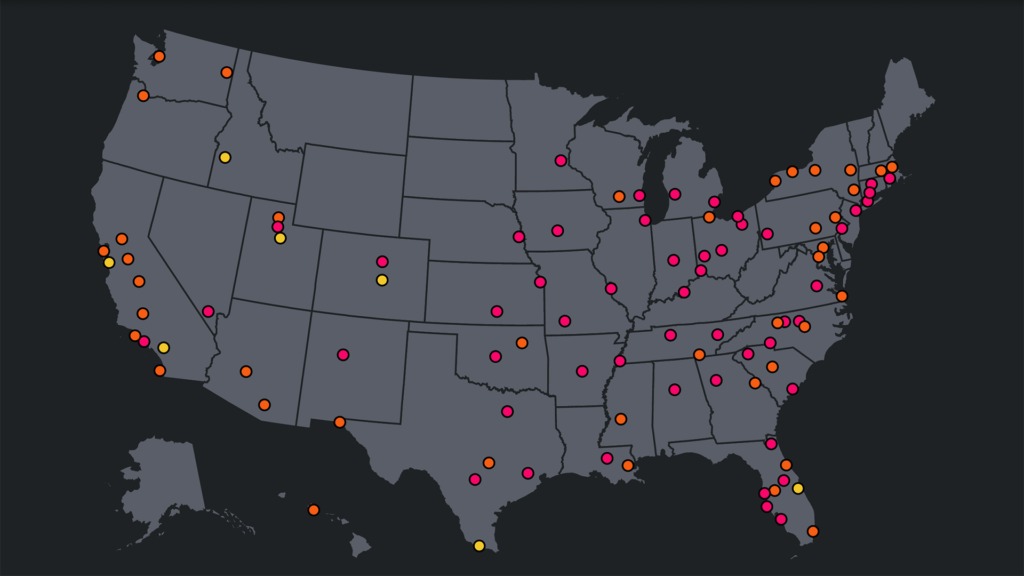
“When we thought about the issue of equity, and our desire to really reflect the diverse communities that we serve, we thought nobody’s really looking holistically across multiple areas of focus and across multiple data sets to give us a picture of how equitable or inequitable our communities are,” says Anna Robertson, the ABC group VP in charge of the project.
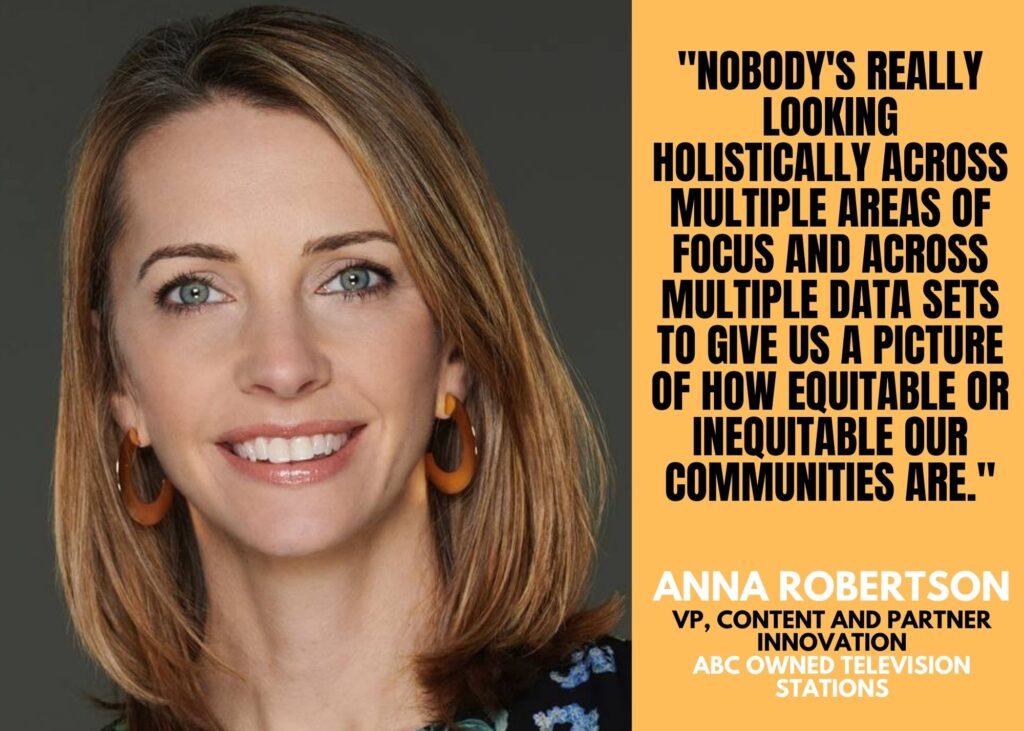
“We’re having these conversations all the time. And it’s extremely disheartening to see so many of those conversations based in people’s perceptions, or based on inaccurate conjecture by pundits, or based on something someone saw on a social media meme, as opposed to what the reality on the ground is in any of our cities,” says John Kelly, who runs the ABC station group data team that generated the report. (We first reported on the data team and its work on COVID coverage in May of 2020.) “The truth of the matter is, as you look at this data, there is something to work on, or something to talk about, or in most cases, some things to be working on and talking about in every one of our major cities in this country,” Kelly says.
As the Equity Report was taking shape, Kelly and his colleague Mark Nichols visited the ABC owned stations — seven of the eight, all but Fresno, have a data journalist on staff — to share results, offer reporting guides and encourage newsrooms to produce stories based on the findings. “It’s a story brainstorming session of sorts,” Nichols says. “What’s going on in your particular area that the equity report could help with?” The website links to local coverage that stations have already produced, and Nichols hopes the findings will now become a regular feature of their reporting. “We can certainly use the Equity Report to give some context or perspective or to enhance any of the daily stories that we are doing that have to do with any of these topics,” he says.
Robertson and the data team also assigned a succession of topics to the stations, starting with police diversity last spring, and asked all the newsrooms to find local angles to explore. Akilah Davis produced her story on disparities in school discipline as part of a collective focus on education. This week, all the stations aired stories on health insurance inequities in the Hispanic and Latino communities. “We wanted all eight stations to cover each topic,” Robertson says. “So we have really driven this as a priority across the group. But it also happens the other way.” To that point, Robertson and Kelly encouraged newsrooms to provide feedback as the project developed, and stations are also free to pursue any angle they find in the data.
WATCH Akilah Davis’s report on school disciplinary disparities
Mark Nichols also works with ABC News to mine the data for stories. The network’s Pierre Thomas did a lengthy report on police diversity based on the Equity Report findings, and a story on housing discrimination is in the works. Now that the full report is out, the team plans to work more closely with ABC affiliates that want to apply the results to their markets. And of course with the report now public, any media organization can use it as a resource.
To my surprise, the ABC team resisted the temptation to create lists of the best and worst cities, especially given that the data is all there and how well that kind of content performs on digital platforms. But that was a deliberate decision. “We didn’t want to sensationalize it in any way or call anybody out,” Robertson says. “I think we sometimes tend towards these Top 10 lists that can oversimplify complicated issues. And this is a very important and complicated report.”
“The point here is that you don’t even want another city to say, ‘Well, there are some cities worse than us.’ The idea here is to look at what your city’s doing,” adds Kelly. “There’s nothing about the homeownership gap in Philadelphia that is relevant to the homeownership gap in New York City. People who live in New York need to work on that gap regardless, and pointing over and saying, ‘Well, it’s worse in Philly’ doesn’t absolve them from dealing with their issues.”
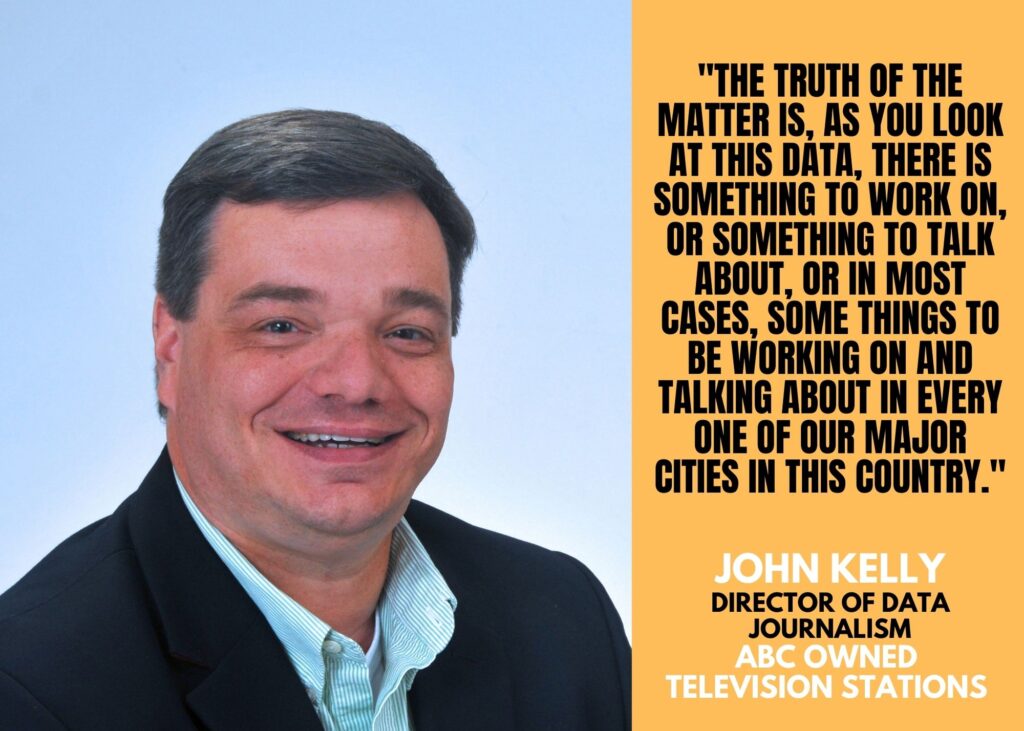
The Equity Report, whose website was partly funded by a grant from the Google News Initiative Innovation Challenge, is the latest in the ongoing Our America series of projects from the ABC owned stations — a series that by its own description “aims to amplify the voices of underrepresented and marginalized communities.” Every chart and statistic in the report is clearly sourced; there are detailed explanations of how the data team defined and measured inequities; and there’s even an impressively humble request for feedback and additional ideas.
The team promises to keep the Equity Report up to date and is considering other social issues, like gender discrimination, that might lend themselves to a similar approach. Robertson, whose responsibilities include innovation, also sees strategic value in the project. “How do we serve the next generation mobile news viewer and make sure that our products and our brands are relevant to everybody? I think these kinds of tools and these kinds of approaches can appeal to a different audience than our traditional viewer.”
“I think the data has surprised some people,” John Kelly says. “I think even journalists who cover these issues all the time are surprised at how stark some of this data is, even in their communities where they live and work. Listen, for every community that looks at this, there are some pain points in this data. There are some painful awakenings perhaps for people around what this data may be saying about whether or not there are disparities and how deep those disparities are.”
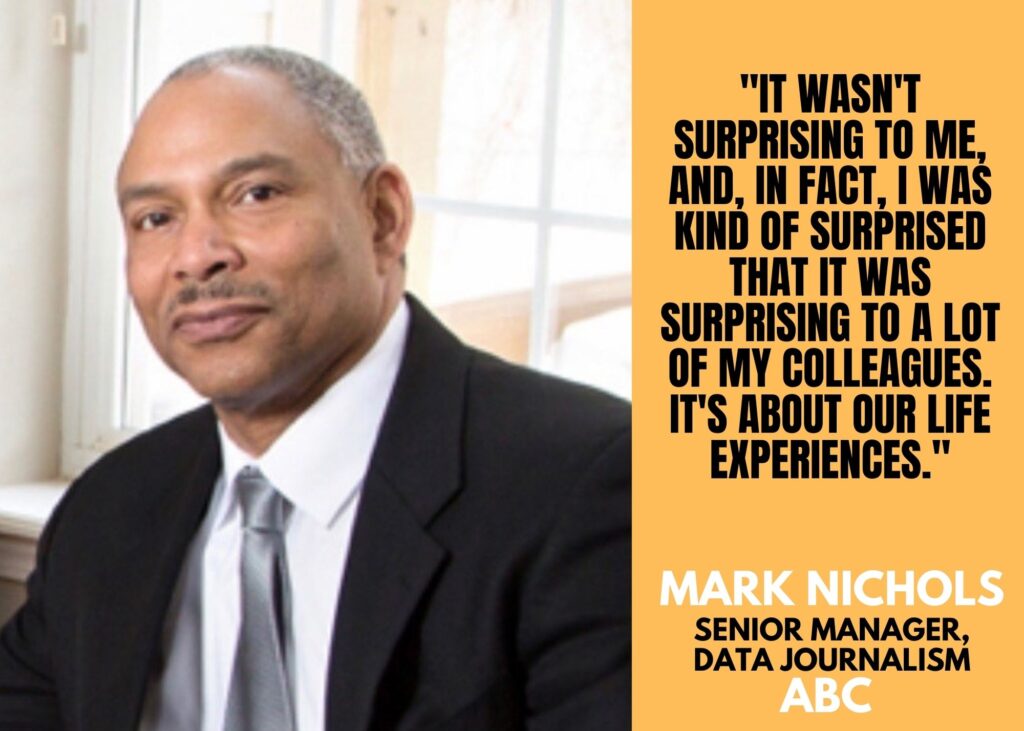
“It wasn’t surprising to me, and, in fact, I was kind of surprised that it was surprising to a lot of my colleagues,” says Mark Nichols, who is Black. “It’s about our life experiences,” like gratuitous traffic stops or an overpriced mortgage loan to move into a suburban subdivision. “I hope that it’s at least eye opening to the audience at large. I just hope that we can start a deeper conversation that’s steeped more in the data we’re presenting here.”
“The data kind of validates the lived experiences of certain community members or certain reporters, and so seeing that data come to life through the storytelling is really what it’s all about,” says Anna Robertson. “We’re excited to see where it could have impact, whether it be with others in the media, with community leaders, or with government officials to really empower change.”
Back in Raleigh-Durham, Akilah Davis works with embedded data journalist Maggie Green to enhance her reporting on race and culture with hard numbers. “These stories are very important, and they do impact me, and they do impact my personal life,” she says. “I hope that I’m a change maker under this role. I really do. I think it’s groundbreaking, and I’m excited about the work we’re doing.”
Get the Lab Report: The most important stories delivered to your inbox